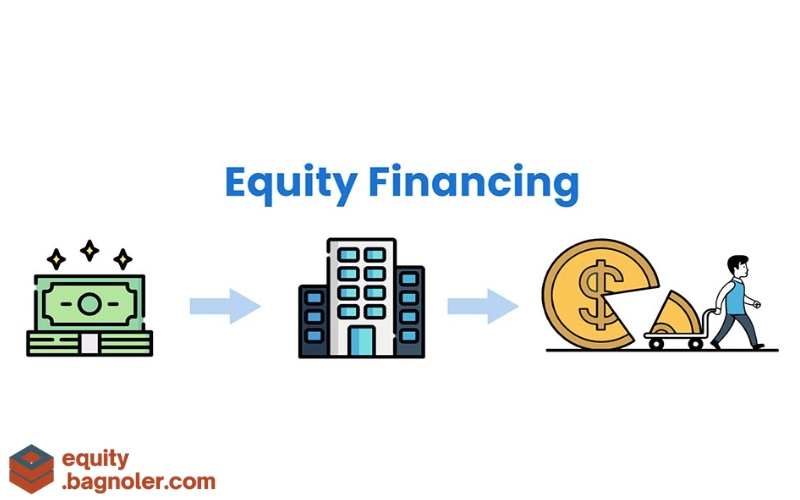In the financial world, equity or owners’ equity plays an important role not only for companies but also for investors. Understanding the common types of equity capital flows helps investors choose the right investment strategy and minimize risks in the process of asset development. Equity capital flows can be classified into many different types, each with its own unique characteristics, suitable for different investment needs and goals. In this article, we will learn in detail about the common types of equity capital flows today.
1. COMMON STOCK
Common stock is the most basic and most common type of equity capital in public companies. This is the type of stock that most investors own when participating in the stock market. Common stockholders have the right to vote at shareholder meetings and participate in important company decisions, such as electing the board of directors or deciding on strategic policies.
One of the strengths of common stock is the ability to share in the company’s profits. Shareholders will receive dividends if the company decides to pay them, but the dividend level is not fixed and can change according to the company’s financial situation. In addition, the value of common stock can grow strongly if the company develops successfully, bringing high profits to investors. However, the accompanying risk is not small: if the company encounters financial difficulties, the stock may lose value or not pay dividends.

2. PREFERRED STOCK
Preferred stock is a special form of equity capital, giving the owner certain benefits, different from common stock. Preferred stockholders do not have voting rights at shareholder meetings, but they do have priority in receiving dividends and financial benefits before common stockholders.
Preferred stock typically pays a fixed dividend, making it an attractive investment vehicle for investors seeking stable income. Furthermore, in the event of a company’s liquidation or bankruptcy, preferred stockholders are paid before common stockholders, reducing risk for investors.
Although preferred stock offers greater stability than common stock, it does not offer voting rights, making it less suitable for investors who want to participate in the management of the company.
3. CONVERTIBLE STOCK
Convertible stock is a type of equity that allows the owner to convert the stock into common stock within a certain period of time or upon meeting specific conditions. This type of stock can be issued by companies that are looking to raise capital but want to keep borrowing costs low. Investors who buy convertible stock often have the expectation that the price of the common stock will increase in the future, allowing them to convert the convertible stock into common stock at a preferential price.
Convertible stock typically has a fixed dividend, similar to preferred stock, but offers the flexibility of converting it into common stock if the company performs well. Therefore, this type of stock can be considered a combination of preferred stock and common stock, suitable for investors who are both looking for stable income and want to participate in the company’s growth.
4. CLASSES OF STOCK
Some companies, especially large, publicly listed companies, will issue different classes of stock, called “classes of stock”. Each class of stock will have different rights, depending on the number and type of shares the investor owns.
For example, a company may issue class A shares with stronger voting rights and class B shares with more limited voting rights. Investors will choose the shares that best suit their investment goals. Class stocks tend to create a hierarchy of power within the company, where the founder or founders retain the greatest control while other investors only hold financial interests.
5. REVENUE SHARING STOCK
Revenue sharing stock is a special type of equity in which shareholders receive dividends based on a percentage of the company’s profits rather than the number of shares they own. This type of stock is less common than common or preferred stock, but can be an attractive investment vehicle for investors who want to align their interests with the company’s performance.
Revenue sharing stocks provide investors with a direct share of the company’s profits, but without the direct involvement in management decisions or corporate strategy that common stock does.
6. TREASURY STOCK
Consolidated stock is not a type of equity issued to the market but is stock that the company has bought back from current shareholders. This is the act of the company buying back its own shares with the purpose of controlling capital sources or adjusting the ownership ratio of shares in the company.
Although consolidated stock does not create direct financial benefits for investors, the company’s stock buyback can help increase the value of remaining shares and increase the ownership ratio of current shareholders.
CONCLUSION
Thus, the types of equity capital flows are clearly differentiated with distinct rights and characteristics. From common stocks, preferred stocks to convertible stocks or profit-recording stocks, each type has different advantages and disadvantages and is used depending on the financial goals of the company and investors. Understanding each type of capital will help investors build appropriate investment strategies and minimize financial risks when investing in stocks.
